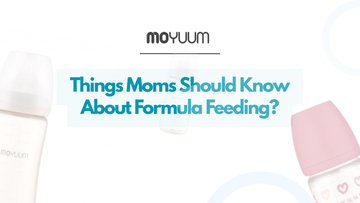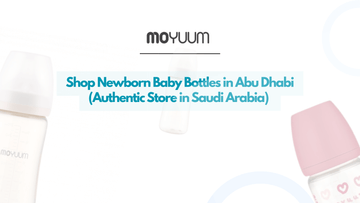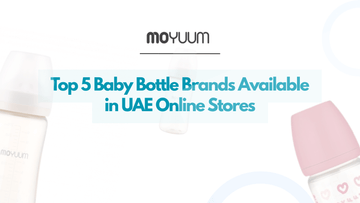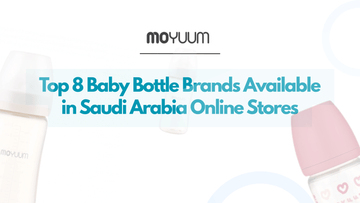Becoming a mom means facing a wave of questions—especially when it comes to feeding. Whether you’re fully formula feeding, supplementing breastfeeding, or transitioning, doubts creep in. Is spit-up okay? Can I switch brands? Am I doing this right? You’re not alone, and you’re not doing it wrong.
This guide answers the real questions moms ask, with no fluff. Whether you’re using glass bottles, soothing baby with a pacifier, or transitioning between formulas, we’re diving deep into expert-backed, mom-tested advice you can trust.
Is Spitting Up Normal After Formula Feeding?
Yes, it’s very normal, especially in the early months when your baby’s digestive system is still maturing. Spit-up often happens when babies swallow air while feeding, eat too fast, or simply overfeed.
Unlike vomiting, which is forceful, spit-up is usually gentle and not painful. As long as your baby is gaining weight and doesn’t seem distressed, you likely have nothing to worry about. Most babies outgrow frequent spit-up by the time they can sit up on their own.
How to Reduce Spit-Up: Bottle Positioning & Nipple Flow Tips
Reducing spit-up starts with feeding technique. Keep your baby in an upright position while feeding and for at least 20–30 minutes afterward. Tilt the bottle just enough to fill the nipple and avoid bubbles.
Choose slow-flow nipples, especially for newborns, to prevent gulping. Burp your baby every 1–2 ounces. Many moms in warm climates like the UAE prefer glass bottles for easier cleaning and sterilization. Anti-colic bottles can also help minimize swallowed air.
What Are the Signs of a Formula Allergy in Babies?
Formula allergies—often to cow’s milk protein—can show up as eczema, colic-like fussiness, bloody stools, vomiting, or diarrhea. These signs may appear within hours or take days to develop. If you notice red flags like persistent rashes, mucus in poop, or sudden weight changes, consult your pediatrician.
Allergy testing or a switch to a hypoallergenic formula may be advised. Avoid changing formulas too quickly without medical advice, as some symptoms overlap with lactose sensitivity or reflux.
Is Soy Formula Safe? And Who Should Avoid It?
Soy formula is a safe, nutritionally complete option for full-term babies who can’t tolerate lactose or for families avoiding animal products. However, it’s not recommended for premature babies or infants with known soy allergies. Interestingly, many babies allergic to cow's milk are also allergic to soy.
In such cases, doctors often suggest extensively hydrolyzed or amino acid-based formulas. Homemade soy formula is dangerous and should never be used—it can cause severe nutrient imbalances.
Read: What Is the Best Baby Bottle to Prevent Gas?
When Is It OK to Switch Formula Brands or Types?
Switching between formula brands of the same base (e.g., cow’s milk) is typically safe. You might do this for reasons like cost, availability, or your baby’s comfort. However, switching between types (e.g., from dairy to soy or hypoallergenic) should only be done with your pediatrician’s guidance.
To ease the transition, mix the old and new formula gradually over several days. Some babies may experience mild digestive changes like gas or loose stools during the adjustment period.
Does My Formula-Fed Baby Need Extra Vitamins or Fluoride?
Most commercial formulas are fortified with iron and key vitamins, so healthy, full-term formula-fed babies usually don’t need additional supplements. However, if your baby drinks less than 1 liter per day, a daily vitamin D supplement (400 IU) is recommended.
Fluoride is generally not needed during the first 6 months. After that, your doctor may recommend it if your tap water lacks fluoride. Avoid self-supplementing—too much of certain nutrients can be harmful to infants.
Why You Should Never Prop a Bottle During Feeding
Propping a bottle—leaving it in baby’s mouth while they lie unattended—can be extremely dangerous. It increases the risk of choking, ear infections, and tooth decay, and it removes the natural rhythm babies use to regulate their intake.
Babies can also overfeed because they can’t pull away when full. Feeding is more than nutrition—it’s a time for eye contact, comfort, and bonding. If you need to soothe a baby between feeds, offer a pacifier for kids instead.
Is It Safe for Babies to Sleep With a Bottle?
No, sleeping with a bottle poses several health risks. Milk can pool in the mouth and throat, leading to choking, ear infections, and baby bottle tooth decay—even before teeth are visible.
Additionally, lying flat while feeding can cause reflux or aspiration. If your baby needs to suck for comfort at night, offer a pacifier or teether instead. Establishing a sleep routine that includes feeding before bed—but not during—is best for safety and dental health.
How to Choose the Right Bottle for Formula Feeding
The right bottle makes all the difference in feeding comfort. Choose bottles with anti-colic vents to reduce air swallowing and discomfort. Glass bottles are popular for their durability and ease of sterilization, especially in hotter climates. Go for wide-neck bottles for easy cleaning and accurate formula mixing.
Pair with slow-flow nipples that mimic breastfeeding. If your baby is teething, try a dual-function teether bottle to soothe gums while keeping feeding consistent and comforting.
Can I Mix Formula and Breastfeeding Without Problems?
Yes, combination feeding is a healthy and practical choice for many families. It allows flexibility for moms returning to work or reducing nursing sessions while still offering the benefits of breastmilk. To avoid nipple confusion, use slow-flow nipples and bottle feed in a paced manner.
Introduce formula slowly, starting with one bottle a day. Pumping can help maintain milk supply. Many moms find this balance supports both bonding and a smoother weaning process.
Final Word for Moms
Feeding your baby with breast milk, formula, or both is about keeping them healthy and cared for. Choosing formula does not make you any less of a mother. What matters most is a well-fed baby and a supported, confident parent. Ask questions, get help when needed, and do what works for you. Your baby needs you, not perfection.





